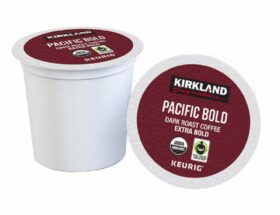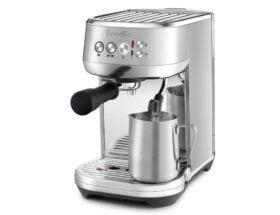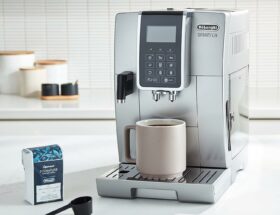
Mastering Milk Frothing at Home: 7 Ways to Froth Coffee Without a Frother
Frothing milk is a crucial step in creating delicious and creamy coffee drinks like lattes and cappuccinos. While many coffee lovers invest in a milk frother to achieve that velvety texture, not everyone may have one readily available in their kitchen. However, fear not! There are several alternative methods you can use to froth milk without a frother, using tools you likely already have at home. In this comprehensive blog post, we’ll explore six effective methods to help you achieve barista-quality frothed milk without the need for a specialized frother.
Table of Contents
- Introduction
- Frothing Method 1: The Mason Jar Technique
- Frothing Method 2: The French Press Frothing Technique
- Frothing Method 3: The Hand Whisk Frothing Technique
- Frothing Method 4: The Electric Blender Frothing Technique
- Method 5: The Immersion Blender Frothing Technique
- Method 6: The Battery-Operated Frother Method
- Frothing Method 7: The Whisk and Pot Method
- Selecting the Right Milk for Frothing
- The Right Milk Temperature for Frothing
- Wrap Up
Introduction
Are you tired of spending a fortune at coffee shops just to enjoy a creamy and frothy coffee? With a little practice and the right technique, you can easily froth milk at home without a frother. In this blog post, we will cover six different methods using common kitchen tools. Whether you’re a coffee enthusiast or just looking to up your coffee game, these tips will help you achieve the perfect froth every time.
Frothing Method 1: The Mason Jar Technique
Introducing the Mason Jar Technique, an age-old yet effective method for frothing milk right in your kitchen. It’s a testament to human ingenuity, exploiting the physics of aeration through a repeated shaking process. This approach eliminates the need for expensive, specialized tools, favoring instead a common household item – the mason jar. This method is favored for its simplicity and the creamy, frothy milk it produces, perfect for a homemade cappuccino or latte.
Step-by-Step
- Step 1: Pour an adequate amount of milk (preferably whole milk for a richer froth) into a microwave-safe container. Heat it to a temperature within the range of 140°F (60°C) to 155°F (68°C). You can utilize a microwave for this purpose or a stovetop, being cautious not to bring it to a boil.
- Step 2: Transfer the heated milk into a mason jar. Fill only halfway to allow sufficient room for froth expansion.
- Step 3: Secure the jar’s lid tightly. With both hands, shake the jar vigorously and rapidly for approximately 30 to 60 seconds. From personal experience, more intense shaking equates to a denser froth.
- Step 4: After shaking, if your froth has cooled down more than you’d prefer, you can reheat it. Remove the lid and place the jar in the microwave again, this time for 30 seconds. Be sure to watch for any signs of the milk overflowing.
Expert Tips
- Cold Milk Froths Better: In my experience, cold milk tends to hold air better and results in more froth. Even though you will heat the milk later, always start out with cold milk.
- Try Different Milk Types: Over my journey of coffee-making, I’ve found that different types of milk yield different froth results. Whole milk results in creamy froth due to its high fat-content while skim milk froth is larger, but less creamy. I also discovered that non-dairy milk such as almond milk creates a very light and silky froth. Don’t be afraid to experiment.
Troubleshooting
- Inadequate Froth: If your milk isn’t frothing as much as you’d like, you may need to shake it a bit longer. This technique does require a bit of elbow grease.
- Milk Overflowing During Reheating: Avoid filling the jar too much, as the froth expands when reheated. Always fill only half the jar with milk.
Remember, practice makes perfect! It may take a few tries to achieve the froth consistency you want, but the end result will be worth it – luxurious, frothy milk to perfect your homemade coffee beverages.
Frothing Method 2: The French Press Frothing Technique
The French Press Frothing Technique is an elegant and efficient method for creating beautifully frothed milk without the need for an electric frother. Traditionally used for brewing a rich and robust cup of coffee, the French press surprisingly also makes for a fantastic milk frother. Its fine mesh plunger introduces air into the milk, creating a silky and creamy froth that flawlessly complements your homemade coffee drinks.
Step-by-Step
- Step 1: Pour your preferred milk (whole milk or non-dairy alternatives) into a microwave-safe container or heat on the stovetop until the temperature is between 140°F (60°C) and 155°F (68°C).
- Step 2: Carefully pour the heated milk into your French press. Be cautious not exceed halfway – the remaining space is necessary for the frothing process.
- Step 3: Place the plunger on top of the French press and start to pump up and down swiftly and steadily for around 30 to 60 seconds. Once you see a satisfactory frothy layer, you can halt the process.
Expert Tips
- The Right Amount: Be conscious about not overfilling your French press. There should be room for the milk to move and froth up properly, around halfway should be ideal, I’ve found this to result in the best froth.
- Handle with Care: Plunge with moderation. Being overly aggressive with plunging can lead to spills or, in the worst case, a broken French press. Plunging swiftly but under control is the key to successful frothing.
- Temperature Matters: Avoid overheating your milk when using a French press. It’s quite easy for things to get messy if the milk becomes too hot.
Troubleshooting
- Less Froth: Should your milk not froth as expected, try increasing the speed of plunging motions. This introduces more air into the milk, resulting in more froth.
- Ensuring Uniformity: Sometimes, the froth can be unevenly textured. To combat this, ensure the plunger is moving up and down fully in the press and not just at the surface of the milk.
With this French press method, you can create a smooth, velvety froth even when you don’t have a professional frother. Not only does this serve your milk frothing needs splendidly, but it also enables you to enjoy the frothing process in an entirely new way. Enjoy your divinely creamy coffee!
Frothing Method 3: The Hand Whisk Frothing Technique
The Hand Whisk Frothing Technique brings back a hint of nostalgia and a dash of elbow grease. In absence of high-tech equipment, our culinary predecessors have relied on this easy yet effective way of whisking milk into a frothy delight. Using just a simple hand whisk, this method gives you complete control over your froth’s consistency and offers the charm of making frothed milk in a truly classic style.
Step-by-Step
- Step 1: Begin by heating your chosen milk in a saucepan over low to medium heat. You should aim for a temperature between 140°F (60°C) and 155°F (68°C) for the best froth.
- Step 2: Once your milk achieves the required temperature, immerse your hand whisk into the heart of the warmed milk.
- Step 3: Embark on a rhythmic journey with your whisk, swiftly and consistently whisking back and forth. This energetic motion will introduce air into the milk that creates froth. Continue until the milk doubles in volume and achieves your desired level of frothiness.
Expert Tips
- Comfortable Handling: Select a whisk that you’re comfortable handling. For effective frothing, you should be able to maintain a good grip and whisk swiftly.
- To Chill or Not to Chill: While it may seem unconventional, chilling your whisk before using it can result in better froth. Try it out and see the difference!
- Microwaving is Not a Crime: Just like with the Mason Jar Technique, don’t hesitate to give your frothed milk a quick 15-30 second whirl in the microwave if it has cooled down during whisking.
Troubleshooting
- Uneven Froth: If your froth is not uniform, it might be because you’re not whisking consistently. Try to maintain an even, steady speed.
- Scalded Milk: Overheating the milk can lead to a burnt bottom layer that can affect taste. Be careful to monitor your milk’s heat and avoid bringing it to a boil.
A seemingly humble tool, the hand whisk can indeed be your knight in shining armor when it comes to frothing milk, aiding you in creating a barista-grade, frothy masterpiece right in your kitchen, the old-fashioned way. Enjoy perfecting this time-honored technique!
Frothing Method 4: The Electric Blender Frothing Technique
Versatility is key in the kitchen, and the Electric Blender Frothing Technique is a shining example of this principle. Who would have thought your trusty blender, the champion of smoothies and purées, could also double as an effective milk frother? This technique takes advantage of the blender’s high-speed operation, producing froth in record time – perfect for those rushed mornings.
Step-by-Step
- Step 1 – Heat Your Milk: Start by heating your preferred type of milk on a low-to-medium heat setting in a saucepan. Aim for a temperature ranging between 140°F (60°C) and 155°F (68°C).
- Step 2 – Begin Blending: Once heated, carefully transfer the milk into your blender, ensuring to secure the lid properly. Set the blender at medium speed and blend for around 30 seconds, or until you have achieved the frothy texture that satisfies your requirements.
Expert Tips
- Safety First: Be cautious when using the blender method, particularly when pouring frothed milk into your cup. It tends to create a lot of foam—a potential risk for spillages.
- Clean-Up Promptly: Blenders can be hard to clean if milk residue dries up. To keep your blender in the best shape for frothing, rinse it out immediately after use.
- Mind the Heat: Be careful when choosing your Blender for hot liquids – not all blenders are built for it. Check your manufacturer’s instructions to ensure your appliance can handle the heat.
Troubleshooting
- OverFoaming: Since blenders spin fast, they can cause milk to foam up a bit too much. To avoid this, lower the speed and blend for a shorter period.
- The Milk Isn’t Frothing: This can be due to low fat content in the milk. Try using a milk with a higher fat percentage for better results.
With the Electric Blender Frothing Technique in your arsenal, you’re equipped to whip up frothy coffee beverages in a flash. Not only does it deliver fast results, but it also gives you the freedom to froth large volumes of milk – an advantage when serving guests. Get ready to impress with your blender-frothed coffee drinks!
Method 5: The Immersion Blender Frothing Technique
Much like the traditional electric blender, an immersion blender is an incredibly versatile tool, that makes frothing milk a straightforward task. With its slender design and efficient blending speed, the Immersion Blender Frothing Technique offers a swift and fuss-free way to produce scrumptious frothed milk for your beverages at home.
Step-by-Step
- Step 1 – Choose Your Milk: Decide between whole milk for a creamier texture or opt for 2% milk for a higher level of froth. Non-fat milk isn’t ideal because it creates unstable foam.
- Step 2 – Pour the Milk: Add your chosen milk to a container, ensuring to fill it only halfway as the volume of milk will increase during frothing.
- Step 3 – Position the Frother: Position the whisk of the battery-operated milk frother at the bottom of your milk-filled container.
- Step 4 – Start Frothing: Power up the frother. This action will initiate the process of whipping air into the milk, leading to the formation of tiny bubbles and evolving it into a scrumptious froth.
- Step 5 – Froth Thoroughly: Carefully traverse the frother up and down within the container, ensuring all the milk is aptly frothed.
- Step 6 – Heat the Froth: Once you’re content with the froth’s amount, microwave it for 30-45 seconds to achieve foam stabilization. Keep a watchful eye on it to prevent overflow.
Expert Tips
- Container Selection: When using an immersion blender, the container in which you blend the milk makes a difference. A narrower, taller container will prevent any potential mess and will froth your milk more effectively due to the concentrated force.
- Blend Slowly: Start blending at a slow speed to prevent any hot milk from splashing out of the container and gradually increase the speed as the froth begins to form.
- Position Matters: Always keep the immersion blender submerged in the milk while frothing to prevent splattering and promote even frothing.
Troubleshooting
- Too Much Foam: If the immersion blender is creating more foam than desired, reduce the blending time.
- Lack of Froth: If the milk isn’t getting frothy, try moving the blender in a slow up-and-down motion to efficiently integrate air and create denser froth.
The Immersion Blender Frothing Technique is an excellent way to use one of your kitchen gadgets for an additional purpose, making it a cost-effective alternative to buying a separate milk frother. Once you get the knack for this method, you can enjoy rich, creamy, frothed milk for your coffeehouse-style beverages, all made in the comfort of your own kitchen.
Method 6: The Battery-Operated Frother Method
The Battery-Operated Frother is a household favorite among coffee connoisseurs. Not merely a gimmick, this method is applauded for its efficiency and ease of use. In coffee shops or at home, a battery-operated frother is a reliable tool to help whip up a creamy, velvety froth, leveling up your homemade cappuccinos and lattes to coffee shop quality.
Step-by-Step
- Step 1: Select either whole milk (for creamier texture) or 2% milk (for more foam). Avoid using non-fat milk as it produces less stable foam.
- Step 2: Pour the desired quantity of milk into a container. Fill it only halfway through, as milk will double in size during frothing.
- Step 3: Place the whisk of the battery-operated milk frother at the bottom of your container with milk.
- Step 4: Start the frother. It will begin to whip air into the milk, creating tiny bubbles and transforming it into a rich froth.
- Step 5: Slowly move the frother up and down in the container to ensure all milk is properly frothed.
- Step 6: Once you have the desired amount of froth, heat the frothed milk in a microwave for 30-45 seconds to stabilize the foam. Remember to keep an eye on it to prevent it from overflowing.
Expert Tips
- Always keep the whisk touching the bottom of the container when starting the frothing, this will prevent splashing.
- If you want extra frothy and thick foam, you can froth the milk before and after heating it.
- Ensure your frother is always clean before use to preserve the quality of your milk froth.
Troubleshooting
- If your milk isn’t frothing enough, make sure your frother’s whisk is properly connected and its batteries are charged.
- If the froth is quickly disappearing, it may be a sign your milk is not fresh. Always use fresh, cold milk for best results.
- Some frothers can be louder than others. If noise is an issue, consider using a different brand or model.
Now, armed with your battery-operated frother and these expert tips, you’re all set to master the technique of frothing milk and enjoy perfectly frothed coffee at home!
Did you know that frothing milk is not just for coffee lovers? In fact, it is also commonly used in making various types of tea, hot chocolate, and even desserts like puddings and custards. So, mastering the art of frothing milk opens up a whole world of creamy and delicious possibilities to explore!
Frothing Method 7: The Whisk and Pot Method
If you’re seeking a traditional mode of milk frothing, the Whisk and Pot Method may serve you well. Requiring minimal equipment, this vintage route combines heat, time, and an energetic thirst for a creamy coffee against life’s frenzied pace. Comprising only a pot and a whisk, this technique might just unleash your inner Barista!
Step-by-Step
- Step 1: Pour your choice of milk into a small pot. Once again, the amount depends on your needs but ensure the milk doesn’t exceed halfway – you need room for the forthcoming frothy action.
- Step 2: Apply gentle heat to the pot, warming the milk between 140°F (60°C) to 155°F (68°C). Keep a vigilant eye on the temperature, steering clear of boiling.
- Step 3: Next, take a whisk and begin to whip the milk in a rapid back-and-forth motion. Continue doing this for 60-90 seconds, or until the milk achieves a frothy, creamy consistency. The quicker you whisk, the more air you incorporate, resulting in a denser froth.
- Step 4: When your milk froth has achieved the desired texture, gently remove it from the heat source. Your frothy milk is ready to be delicately poured into your DIY home coffee delight.
Expert Tips
- Use a Large Whisk: Larger whisks tend to mechanically incorporate more air, which makes the froth denser and creamier.
- Keep the Milk in Motion: Keep stirring your milk while heating it on the stove. This circulates the heat evenly and prevents your milk from scalding at the bottom of the pot.
Troubleshooting
- Lacks Creaminess: If your froth is lacking its expected richness, consider switching to a higher fat-content milk. The increased fat can assist to carry the air bubbles, creating a creamier froth.
- Froth Disappearing Quickly: If you notice your milk froth disappearing before you’ve had the chance to enjoy it, it could mean the milk was not whisked vigorously enough or the milk was too hot. Next time, try using cooler milk and whisking faster.
As you practice, you’ll navigate your own quirks in the technique and conceptualize how you like your homemade frothy milk. Remember, patience is key and the end result will be a barista-quality coffee experience within the comfort of your home.
Selecting the Right Milk for Frothing
Another crucial factor in achieving that perfect, creamy froth is picking the right type of milk. Whole milk is often touted as the star performer due to its high fat content. This makes it the champion of creamy texture and depth of flavor, creating a rich foam that can elevate any coffee. For coffee aficionados who enjoy a thick, creamy froth, nothing beats good old-fashioned whole milk.
However, if you’re watching calories, semi-skimmed or 2% milk can be an acceptable alternative. While they might not offer the same luxurious richness as whole milk, they can still produce a decent froth with a lighter feel.
Non-dairy milks also have their place in coffee making. Soy milk and oat milk are both known for making a delightful froth. They’re denser compared to cow’s milk and can give your coffee a creamy, velvety finish. Almond milk, though less creamy, can add a slightly nutty flavor to your coffee.
Expert Tip: For frothing soy or almond milk, ensure it’s well shaken before heating. This is crucial to disperse the sediments evenly and to maximize the froth potential.
Bear in mind, temperature rules still apply irrespective of the milk type. So ensure you’re heating your milk – dairy or non-dairy – to the optimal 140°F (60°C) – 155°F (68°C) range for that perfect froth.
In conclusion, choosing the right milk isn’t about finding the best one – it’s about finding the one that’s best for your preferences. Experiment and find your perfect frothing match to make your coffee experience more elevated and personalized.
The Right Milk Temperature for Frothing
Milk temperature is an aspect of coffee making that’s often overlooked, but it’s surprisingly pivotal! For a perfect, creamy coffee, milk should be heated to a sweet spot of around 140°F (60°C) to 155°F (68°C). Why is this range important? This is the temperature range where the milk’s natural sweetness shines through, and it creates that ideal, velvety froth we all love.
Heating milk beyond this range could lead to scorching, which affects the taste significantly. Scorched milk imparts a burnt, unpleasant flavor that can ruin your perfect cup of coffee. Once milk is overheated, there’s no going back – there’s no way to salvage the ruined flavors. So, remember to keep a careful eye on your heating milk. It’s best to use a thermometer for precise control. But if you don’t have one, stop heating as soon as small bubbles start to form at the edge of your pot, or when steam starts to rise – That’s your cue!
Expert Tip: Take the pot off the heat source before it hits the desired temperature range. The residual heat from the pot will continue to warm the milk to your target range without going overboard!
So, do remember – a good, creamy coffee is not just about the type of beans, the grind, or your brewing technique. It’s also about using adequately heated milk, free from any hint of being scorched. Remember this simple tip, and you’ll elevate your homemade coffee to barista-standard brews in no time!
Wrap Up
Congratulations, you are now equipped with four different methods to froth milk at home without a frother! Whether you prefer using a French press, a whisk, a jar, or a microwave, you have the tools to create creamy and delicious coffee drinks right in your own kitchen.
Remember, choosing the right type of milk is crucial for achieving the perfect froth. Experiment with different milk options such as whole milk, 2% milk, oat milk, almond milk, or soy milk to find the one that suits your taste preferences the best.
Additionally, pay attention to the milk frothing temperature. Aim for a temperature between 140°F and 160°F to achieve the best results. Too hot, and the milk can scorch and lose its texture; too cold, and it may not froth properly.
We hope this blog post has been helpful in guiding you through the process of frothing milk without a frother. Now, it’s time for you to put these techniques into practice and enjoy your favorite creamy coffee creations at home!
If you have any questions or would like to share your own tips and experiences, please leave a comment below. We’d love to hear from you!









